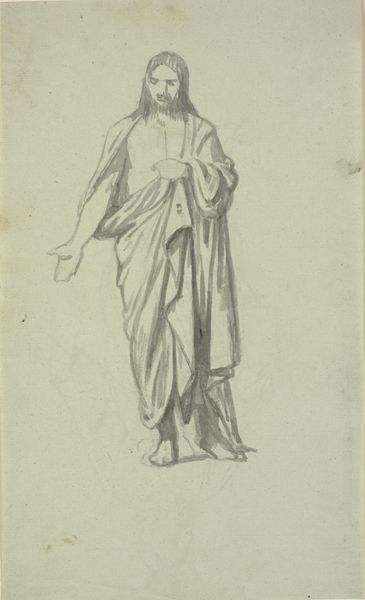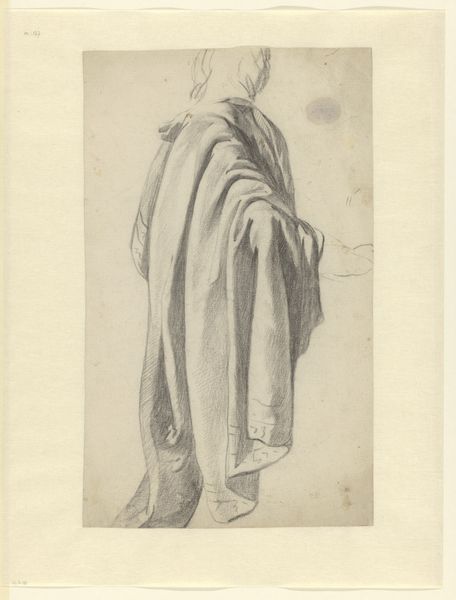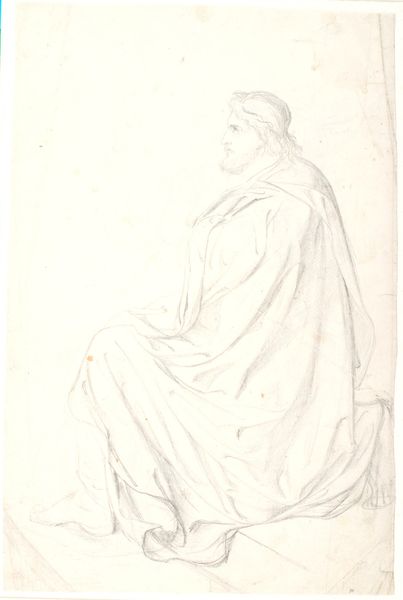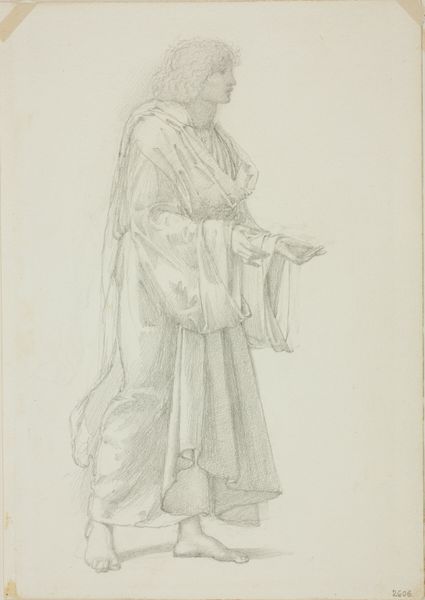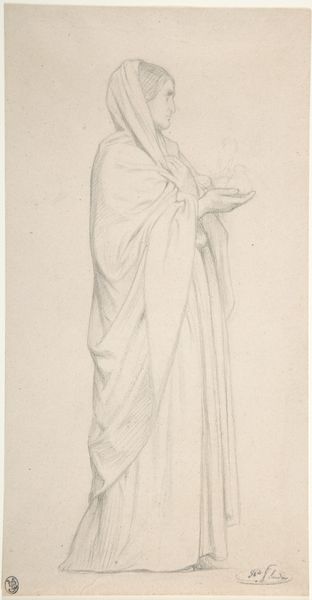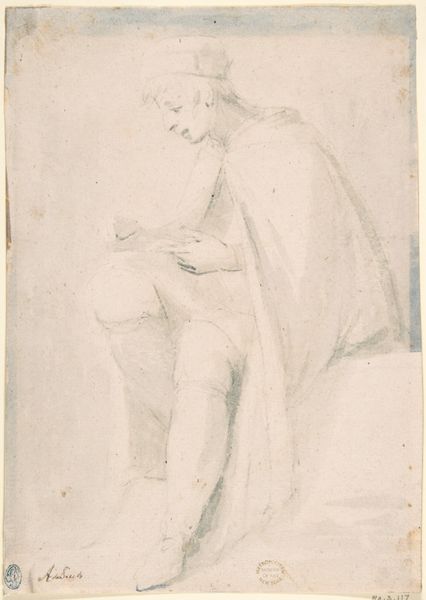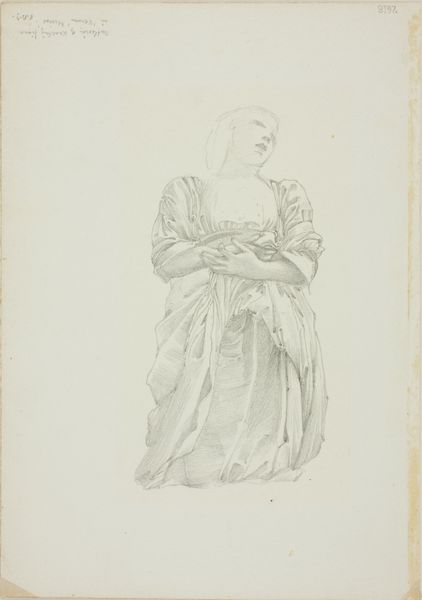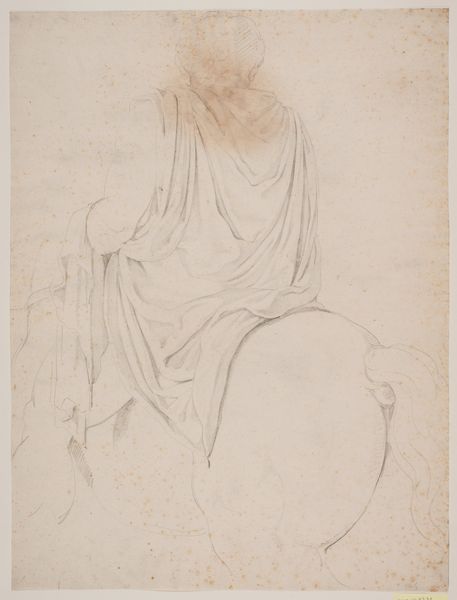
A Drapery Study of a Seated Man 1809 - 1869
0:00
0:00
drawing, pencil, graphite
#
portrait
#
pencil drawn
#
drawing
#
figuration
#
romanticism
#
pencil
#
graphite
#
history-painting
#
academic-art
Dimensions: sheet: 11 5/8 x 8 7/8 in. (29.5 x 22.6 cm)
Copyright: Public Domain
Editor: Here we have Johann Friedrich Overbeck’s “A Drapery Study of a Seated Man," likely created sometime between 1809 and 1869. It’s a delicate drawing rendered in pencil and graphite. The figure’s pose, slumped and leaning on what looks like a staff, makes me think of classical depictions of philosophers or perhaps even biblical figures in contemplation. What is your take on this piece? Curator: That’s a good starting point. Given Overbeck’s context, let’s consider this study as a reflection of the Romantic era's fascination with historical narratives and religious reform. Notice the meticulous attention paid to the drapery. It’s not just fabric; it signifies classical ideals. Consider how institutions like the academies dictated acceptable forms. Do you think this drawing aligns with or challenges those established norms? Editor: I see what you mean. The detail in the drapery is amazing, but the sketch-like quality seems less about perfection and more about... capturing an idea? Almost like a stage in a much larger, less transient piece. Curator: Exactly. This brings to mind the power of drawing in the 19th century as an art form in itself, yet still viewed as subservient to history painting, from which it often derived its source material. Could the figure’s anonymity, and lack of identifying visual attributes serve a didactic purpose in its era? Editor: That makes perfect sense. The figure seems like an ideal, rather than an individual, intended to inspire. Thinking about the political and religious contexts makes me see it as less of a study and more of a statement. Curator: Indeed. The role of the artist within these movements dictated the reception of such work, thus adding importance to even preparatory sketches. Hopefully now we can see this study through that wider lens.
Comments
No comments
Be the first to comment and join the conversation on the ultimate creative platform.
